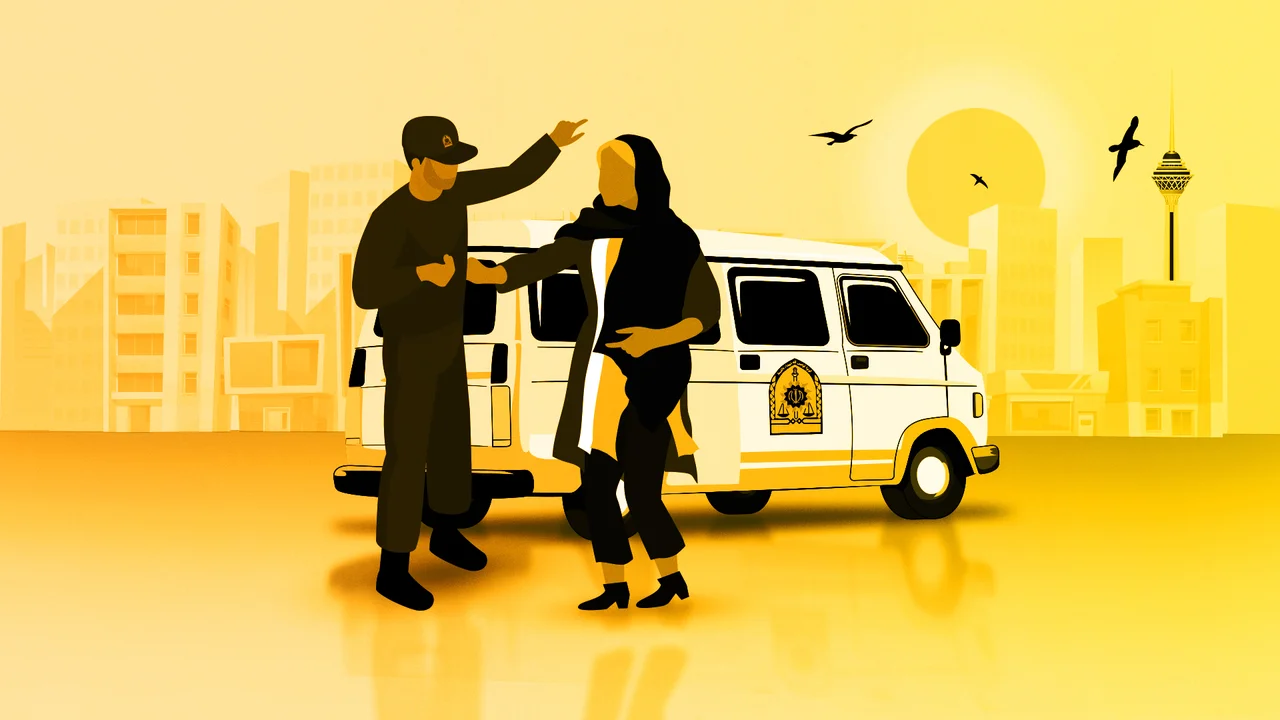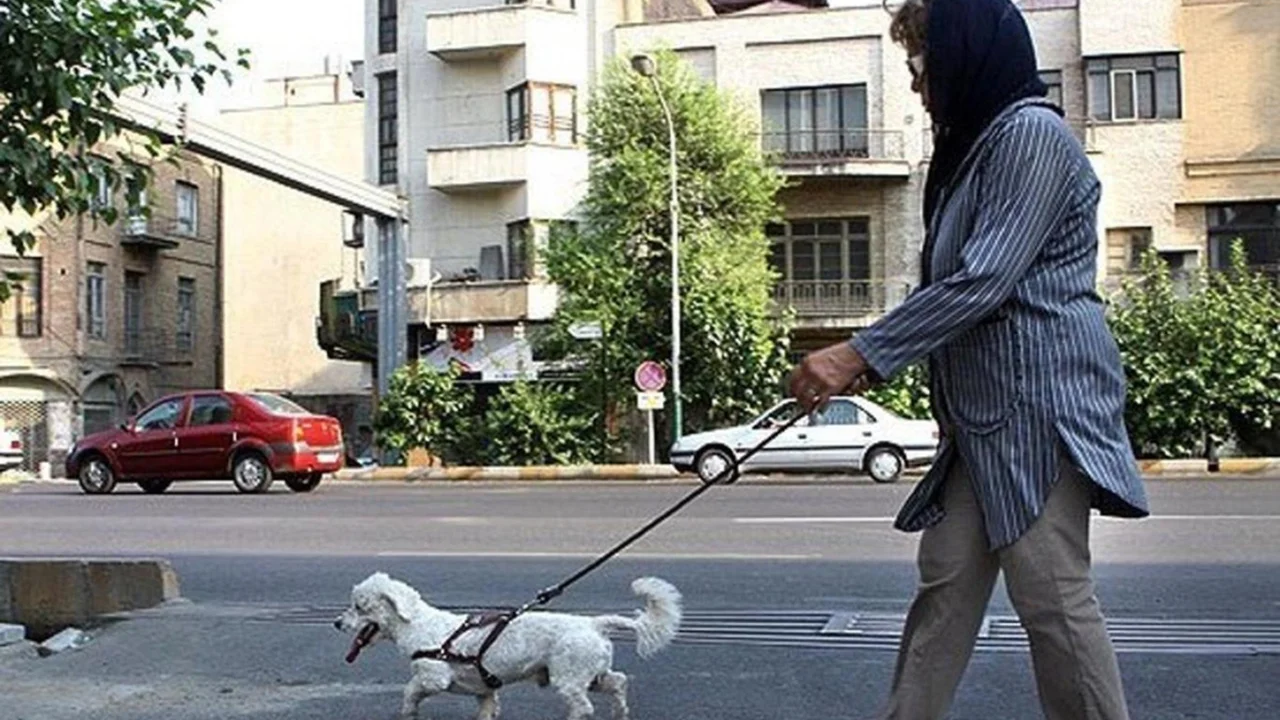Data Call: Women defying hijab in Iran
According to a recent Iran Open Data poll, 8 out of every 10 women have been in public without hijab in the last one or two months. But nearly 90% of them state that they sometimes, or always, carry a scarf or a shawl with them. Although 70% of women who defied the hijab stated that they were worried, nearly half of them said that they met with the approval and encouragement of others while in public. The following report and graphs provide a general overview of the poll’s results.
Hijab, the Islamic dress code of modesty, first became mandatory for women in 1980, as part of a directive issued by the Office of the Prime Minister. This ordinance finally became law in 1983 as part of the Islamic Penal Code. According to Article 120 of the code, “Women who appear without religious hijab in public will be sentenced to up to 74 lashes.”
In the following years, this law, with some changes, became the basis for the formation of special patrol units nicknamed the “Morality Police”. As the years passed, women resisted compulsory hijab in various ways, gradually transforming the practice into a collective political struggle.
The government has often used the Morality Police as a tool to crack down on women, leading to numerous clashes between citizens and the police grouping. The most significant of these clashes was the death of Mahsa Amini, a 22-year-old Kurdish woman, while in Morality Police custody last September. The event ignited widespread political protests.
In response to this incident, and during the political protests, women began to appear in public without headscarves, often clashing with the armed forces as they did so. What started as a protest became normalized in daily life.. However, little is known about the extent of this phenomenon, its individual and social dimensions. Iran Open Data has asked Iranian social media users to express their experience about this subject.
The poll was available online for six days from November 26th to 30th, 2022. During this period, 5,582 individuals took this poll. 97% of the participants lived in urban areas and the remaining 3% lived in rural areas. The participants were from 31 provinces. Most participants state that they lived in Tehran. The least number of participants said they were from South Khorasan and Ilam provinces. The average stated age of the poll takers was 33 years. Half the participants were women, and the other half were men. 42% of the participants did not have bachelor's degree, and 58% had bachelor’s degree or above.
The following report and graphs provide a general overview of the poll’s results.
Being in public without hijab
- Out of every 10 women who answered the questions, 8 said that they have been in public without hijab in the last one or two months.
- Women younger than 40, more than older women, said they appeared in public without hijab.
- Women with college degrees said they ignored the hijab law more than the women without college degrees.
- Single women said they appeared in public without hijab more than married and previously married (separated/divorced) women.
When did women start ignoring the hijab law?
- Nearly 80% of women stated that they first went out in public without hijab during the month after the death of Mahsa Amini.
- Women under 20 who appeared in public without hijab said they did so later than women over 20.
Taking scarves and shawls
- A little more than half the women stated that when they go out without a hijab, they always take a scarf or shawl with them to use if necessary.
- 4 out of 10 women stated that they sometimes take a scarf or shawl with them, and only 1 out of 10 say that they never take any head covering with them.
- Most women under 20 said they have never taken a scarf or headscarf with them when they are without hijab in public.
- Most women over 40 said they always take a scarf or headscarf with them when they are without hijab in public.
- Women between the ages of 20 and 40 appear to have adopted a middle position. They said they sometimes take a shawl or scarf with them.
- More women without a college degree said they “never” take a scarf or headscarf with them when they are in public without a hijab.
- More college-educated women said they “always” take a scarf or headscarf with them when they are in public without a hijab.
- More single women said they “never” take a scarf or headscarf with them when they are in public without a hijab.
- More married women said they “always” take a scarf or headscarf with them when they are in public without a hijab.
- Most previously married women said they “sometimes” take a scarf or headscarf with them when they are in public without a hijab.
Worrying about reactions to being without hijab
- 70% of women say that they were worried that something might happen to them when they were out without a hijab.
- 23% of women said they were not worried and 7% said that they had no preconceived notions.
- Women aged 20 to 40, expressed more concern about potential reactions from others than other age groups. Women over 40 said they were less worried about the reactions, and women under 20 said that they had no particular idea of how others would react to them.
- Among college-educated women, a majority said they were worried about other people's reactions. Among women without a college education, a majority said they were not worried.
Type of reactions
- Half of the women who went in public without hijab said they met with approval and encouragement.
- Only about 7% of the participants stated that others opposed them being public without hijab. 42% said they have not seen any specific reaction.
- Most women under the age of 20 said they received approval and encouragement from others when they have gone out without a hijab. Most women between the ages of 20 and 40 said they have faced warnings and hostility.
Most single women said they met with approval and encouragement from others. Most previously married women said they faced hostility and opposition. Most married women said they have not faced any particular reaction.
Family members going out without hijab
- Male participants of this poll were asked if any of the women in their family went out without hijab in the last one or two months.
- More than three-quarters of these participants stated that at least one of their female family members has been in public without hijab.
- Less than a quarter of male participants stated that none of the female members of their family has been out of the house without hijab.



